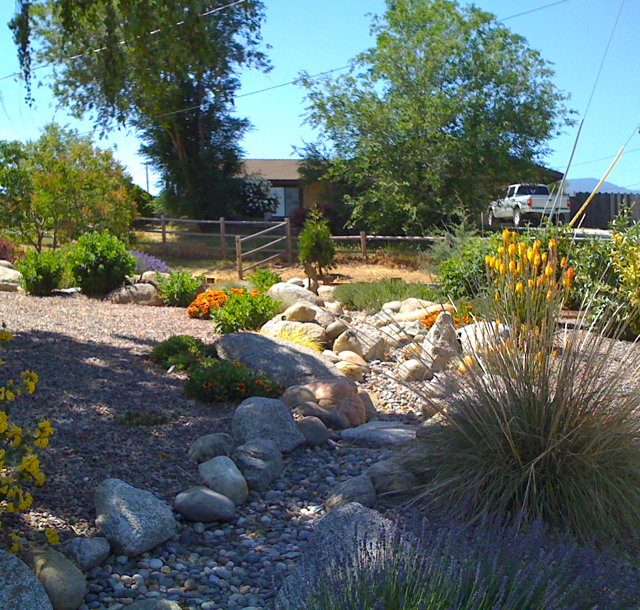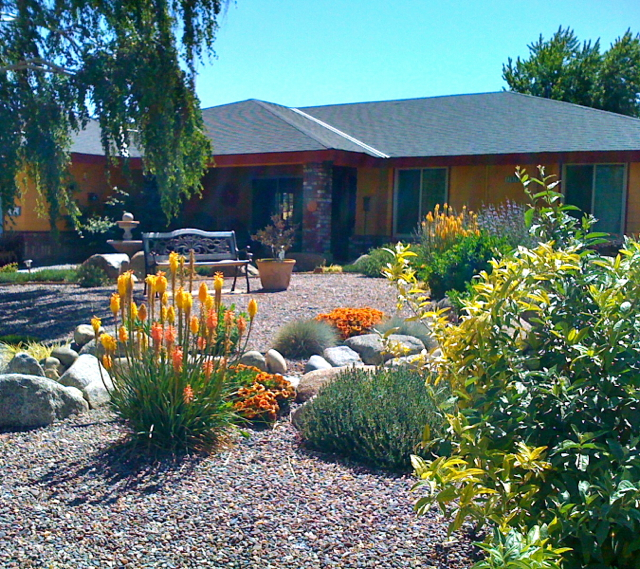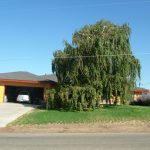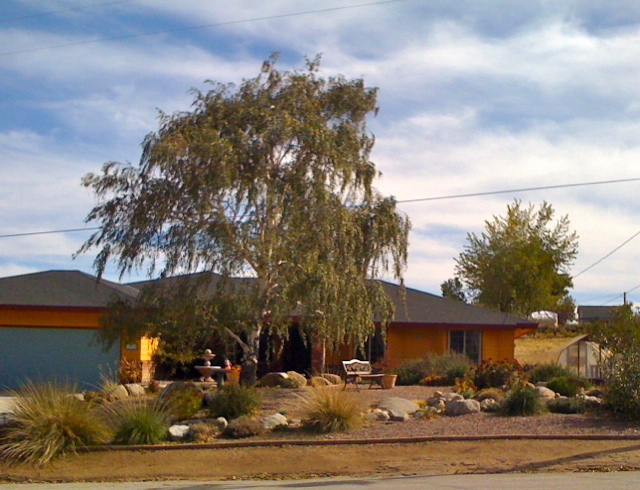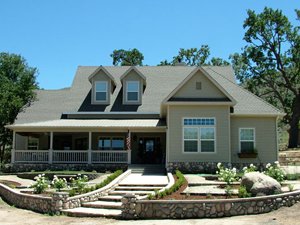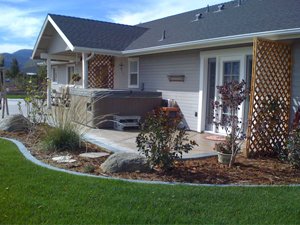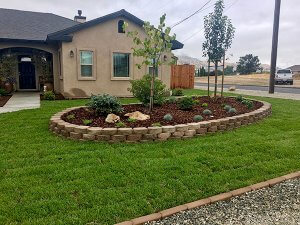Here in Tehachapi our arid climate poses a few challenges to creating the warm, welcoming, nurturing place our home landscapes should be.
If you have gardened here for any length of time here you have no doubt faced some of these demands. So how does one work with our gardening conditions, instead of fighting against what we have to work with?
One way is to emulate what nature offers us here.
I have spent many hours observing our unique natural resources in the mountains and valleys that embody Tehachapi. One activity that I really enjoy is photographing creek beds, so that I can study them. For much of the year the creek beds are dry, providing inspiration on how to re-create them and then extracting the principles that make them look natural, and duplicate them in the landscapes I create for my clients.
A dry creek bed can be a lovely addition to a landscape when it is installed correctly, but when a done poorly it looks artificial and forced, detracting from, rather than adding to the value of the home.
A dry creek bed should be, above all, believable. It should look like it belongs and could have always been there. So how is that accomplished?
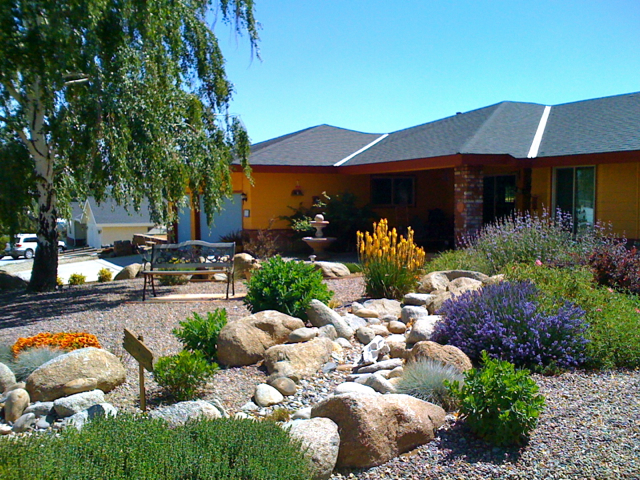 1.) Location, Location, Location!
1.) Location, Location, Location!
The location should be chosen carefully, considering the length and width, how it will start and finish, and will it have a bridge to cross over it at some point?
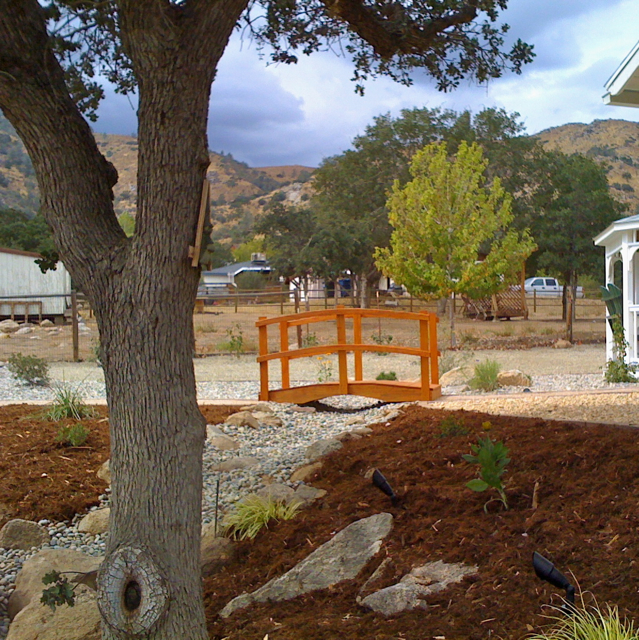 2.) Bigger is better!
2.) Bigger is better!
Bring in some big boulders to anchor the creek bed and then partially bury them so they look like they were always there. The number of boulders is determined by the length of the creek bed. One large boulder every six to eight feet, on average, should be enough. When placing them, position a few on each side of the creek bed at random intervals, taking your cues from nature.
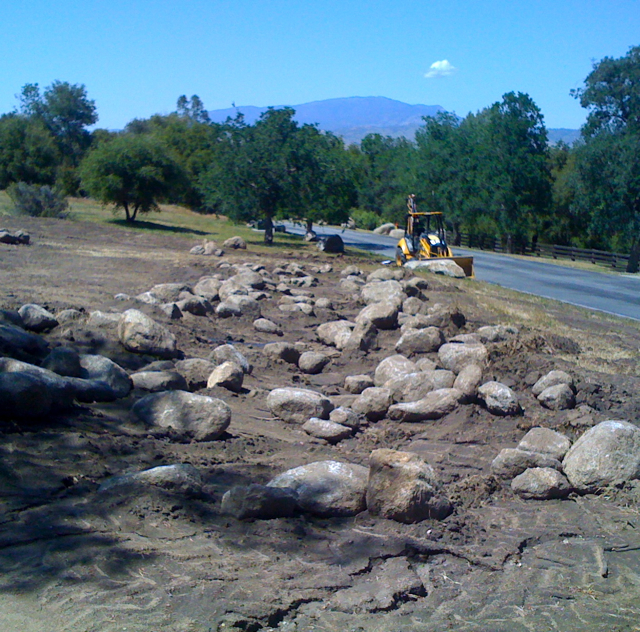 3.) Infrastructure
3.) Infrastructure
To make your life easier install your infrastructure at this point. Run electrical lines and irrigation main lines at this point so that you are ready to water you plants on a timer, and highlight your creek bed with beautiful lighting.
4.) Weed Barrier
After the infrastructure is in put weed barrier cloth down to suppress the weeds in your creek bed. It will not be a 100% fix because weed seeds will blow on top of the finished project and can easily germinate in the nooks and crannies between rocks, but it will suppress the weeds that are under the cloth. To amp up your weed abatement, and keep your project beautiful, also apply a pre-emergence herbicide such as Preen or Weed Impede when the project is complete. This will kill the weed seeds that blow in as they germinate.
5.) Smaller Rock
Next install some smaller boulders, even placing a few in the middle of the creek bed, because in nature the movement of water pushes rocks around and some end up lodged in the middle. Next, four to six inch river rock is used to fill in around the boulders, still leaving some of the center of the creek bed clear. Then, one inch river rock and decomposed granite to fill in between everything and create the middle of the creek bed floor.
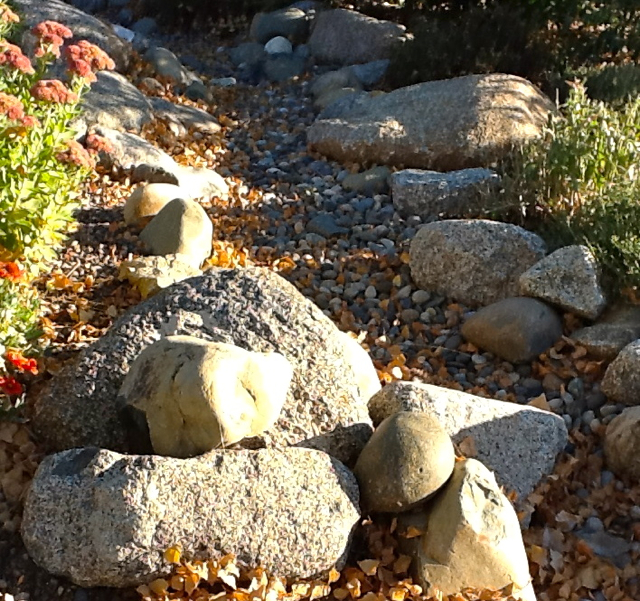 6.) Planting is always last!
6.) Planting is always last!
A few plants placed in the right place will make this picture complete. I always use some Deer Grass (Muhlenbergia rigens) as it is native to our Tehachapi creek beds. Other plants that lend themselves to softening the edges of the dry creek bed are Creeping Germander (Teucrium chamaedrys prostratum), Sweet Flag (Acorus ‘Ogon), Blanket Flower (Gaillardia grandiflora) and many Sages(Salvia clevelandii is a favorite), Red-Hot-Pokers(Kniphofia uvaria), and Blue Fescue(Festuca glauca), just to name a few.
Stand back and look at the finished masterpiece. A well sited, carefully planned and installed dry creek bed can take your landscape from boring to fabulous! It is also less water thirsty and gives you more curb appeal, adding value to your home. This alternative to a water guzzling front lawn can also bring Butterflies, Birds and Bees to your front yard, creating a haven for them and you, that is perfectly in tune with our Tehachapi mountains.
What has been your experience with dry creek beds? Do you have an experience you would like to share, or something you learned in the process that could help out other readers? Please share it in the comments.





